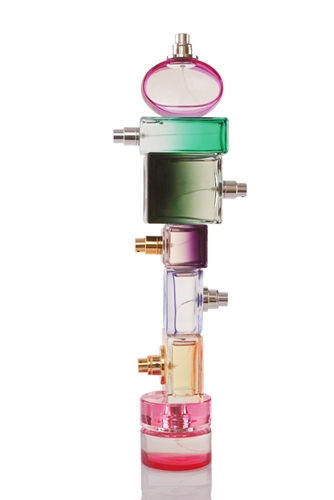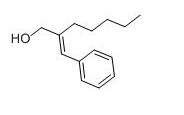Alpha-Amylcinnamyl Alcohol Analytical Organic Reference Standard

![]()
Alpha-Amylcinnamyl alcohol Part No: N-12929-100mg
alpha-Amylcinnamyl alcohol is a fragrance ingredient for perfumes.
alpha-Amylcinnamyl alcohol has been assigned CAS # 101-85-9.
Its formula is C14H20O
IUPAC name is (2E)-2-(phenylmethylidene)heptan-1-ol
B.P. 141-143°C
Please see part number N-12929-100MG for pricing and more information.
alpha amyl cinnamyl alcohol structure
Alpha-Amylcinnamyl alcohol is a chemical that is used to add an aromatic flavor to a variety of personal care products, most popularly perfumes. With a flowery, light scent, alpha-Amylcinnamyl alcohol is a pleasant and decorative ingredient. It does not help wash, clean or prevent perspiration like other chemicals used in similar products.
Although, many people in the industry know what alpha-Amylcinnamyl alcohol is primarily used for, it is important to take an overview of the chemical, its other names, its composition and how best to handle both as a chemist and consumer.
A brief profile
Chemically, alpha-Amylcinnamyl alcohol is known as C14H20O and has a boiling point between 141 and 143 C, like propionic acid. At 25 C, alpha-Amylcinnamyl alcohol has a density of 0.952 grams per milliliter. Its Organoleptic characteristics have been called cinnamon or jasmine, while olfactorily the chemical is aromatic.
Alpha-Amylcinnamyl alcohol is also known by a variety of other names including n-Amylcinnamic alcohol, 2-Amyl-3-phenyl-2-propen-1-ol, 2-Benzylideneheptanol, alpha-Pentylcinnamyl alcohol, Alpha pentyl cinnamyl alcohol, Amylcinnamic alcohol, Amylcinnamyl alcohol or Buxinol. Some names differ for chemical naming reasons while others change, appear and disappear for branding and corporate purposes.
In addition to being a prominent perfume chemical, alpha-Amylcinnamyl alcohol is also used in moisturizers, lotions, soaps, facial scrubs, hair gel and other personal care or beauty products. In its natural state, at room temperature, it is a yellowish to colorless liquid.
Consumer safety
Like any chemical used in personal care products, there are both levels that can be unsafe as well as people who have allergic or adverse reactions to the ingredient. Consumers should avoid eye contact, consumption or inhalation of alpha-Amylcinnamyl alcohol. In minor doses, where the chemical is mixed with other ingredients, such as when part of a perfume, the risk may be reduced, but consulting a doctor is always best. The Occupational Safety and Health Administration only points to skin sensitizing and moderate eye irritation as emergency risks for the chemical.
Although some people may think they have an allergic reaction to perfumes with the substance, the chemical actually creates non-allergic dermatitis in some situations.
Lab safety
Because many researchers or fragrance scientists will be working with in higher concentrations than consumers, the real dangers of alpha-Amylcinnamyl alcohol would lay in the lab. This underscores the importance of lab safety when working with this chemical substance. If the chemical gets into the eyes or skin, the area should be washed immediately to avoid discomfort. Oral consumption is rare and often not harmful.
If spilled, lab personnel should not inhale or have contact with the substance. Anything that may cause an ignition should be removed. In the case of major spills, a self-contained breathing apparatus should be worn, and there should be ample ventilation.
With major spills, the fire department should be alerted and told of the chemicals involved. Alpha-Amylcinnamyl alcohol releases carbon monoxide when burned. In addition to fire, spills can be particularly damaging if they get into drains or waterways. Alpha-Amylcinnamyl alcohol is harmful to aquatic organisms and may negatively impact ecosystems for long periods of time.
When working with this chemical, experts advise against wearing contact lenses for fear that they may absorb the chemical fumes. Other healthy precautions include wearing thick gloves, goggles and avoiding inhalation while handling the chemical. It should be stored upright in a cool ventilated area and always be kept away from heat or flame.
Lung diseases have long been associated with fragrance manufacturers. This stresses the importance of safe handling and limiting inhalation. The National Institute for Occupational Safety and Health published a report in 2007 that recommended better safety practices be established in relation to breathing and skin contact when working with fragrance chemicals.
Alpha-Amylcinnamyl alcohol is an unique chemical used in a variety of products, but, like most chemicals, it is important that people who use alpha-Amylcinnamyl alcohol follow proper safety protocols.
For over 38 years Greyhound Chromatography has been supplying high quality Chromatography consumables to laboratories around the world. Greyhound’s extensive range covers all areas of Environmental, Petrochemical, Food, Forensics, Chemical and Pharmaceutical analysis. Backed by a highly experienced technical services team, Greyhound is the preferred source amongst today’s analysts.
Greyhound Chromatography is pleased to supply Chem Service Certified Reference Standards to Research and Analysis laboratories worldwide.
CONTACT US
Tel: +44 (0) 151 649 4000
Email: marketing@greyhoundchrom.com
FOLLOW US
YOU MAY ALSO BE INTERESTED IN OUR NEWSLETTER










